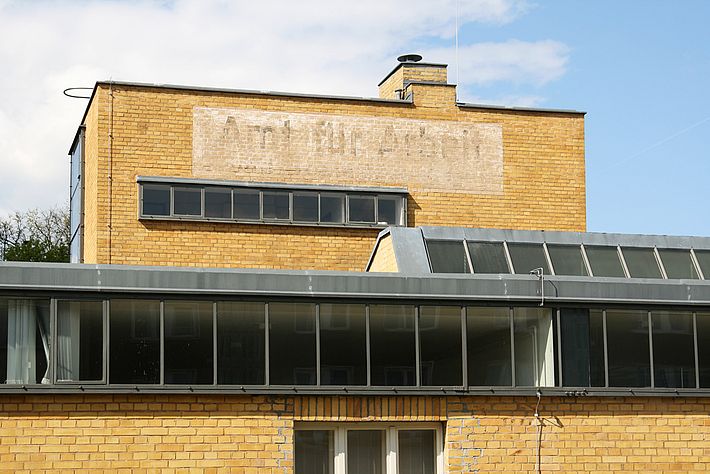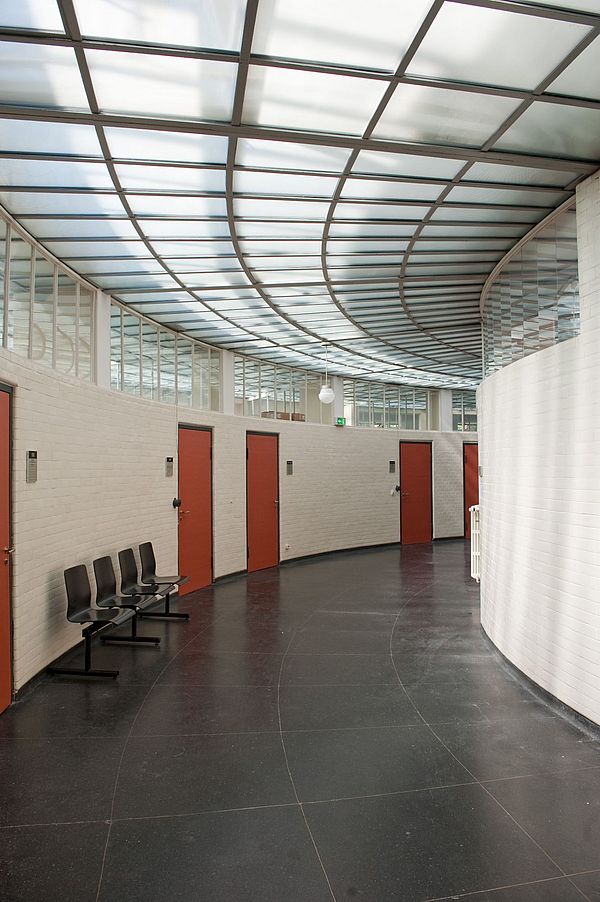Employment Office Dessau
Walter Gropius, 1929
The historic Employment Office by Walter Gropius from 1929 now stands on Dessau’s August-Bebel Square. Unemployment and the placement of jobs was a new mass phenomenon of the industrial society.

[Translate to English:] Text
As a result, the Reich Institute for Employment Services and Unemployment Insurance was founded in 1927. However, the new agency did not have any architectural models and the City of Dessau was once again asked to set the tone. A limited competition for one of the first employment offices in Germany was held in 1927 – the participants were Hugo Häring, Max Taut and Walter Gropius. The decision was close: Gropius ahead of Taut. The Bauhaus director had designed a semicircular flat building of yellow Greppin clinker, which was connected with a two-storey administration block, for the original triangular Ascanian Square.
The interior still reveals what Gropius was thinking when designing this agency as “employment services for a large number job-seekers of various vocational areas with the lowest possible number of civil servants.“ The building, which is only illuminated by a shed roof and clerestory windows, functioned like a people-sorting machine. Six doors were already used to divide the employment-seekers from the outside into categories such as female or male employees, metal or industrial workers, construction workers or higher professions. Waiting rooms were located behind the entrances, which then connected to the offices of the employers and agents in the second ring. Anyone who was given a job exited directly through a hallway in the third ring without meeting the hopeful ones again. Those who were left empty-handed were immediately sent on the dole and to the cashier’s office.
The architecture underscores the functional pathways, even if the waiting rooms of glazed bricks and the processing mechanisms are somewhat reminiscent of a milking carousel. Nevertheless, this is a building with short pathways that want to free the affected people as quickly as possible from their burdensome situation.
